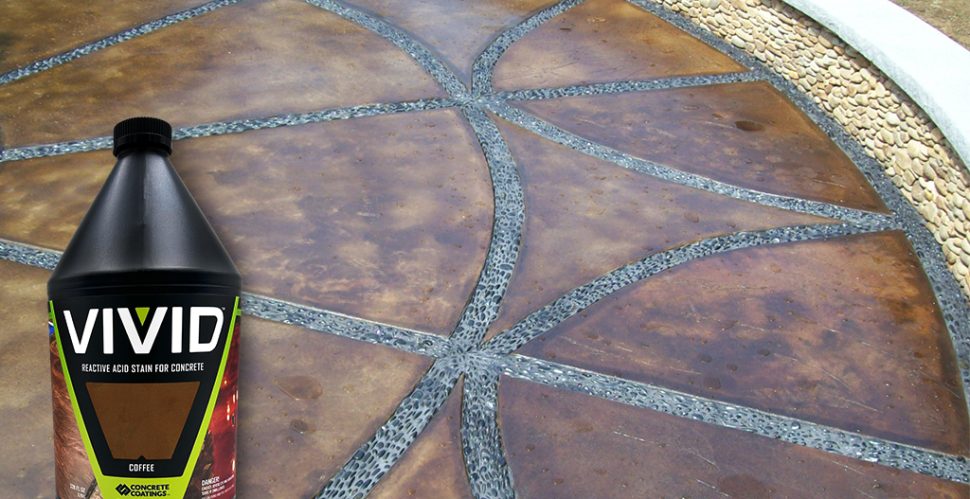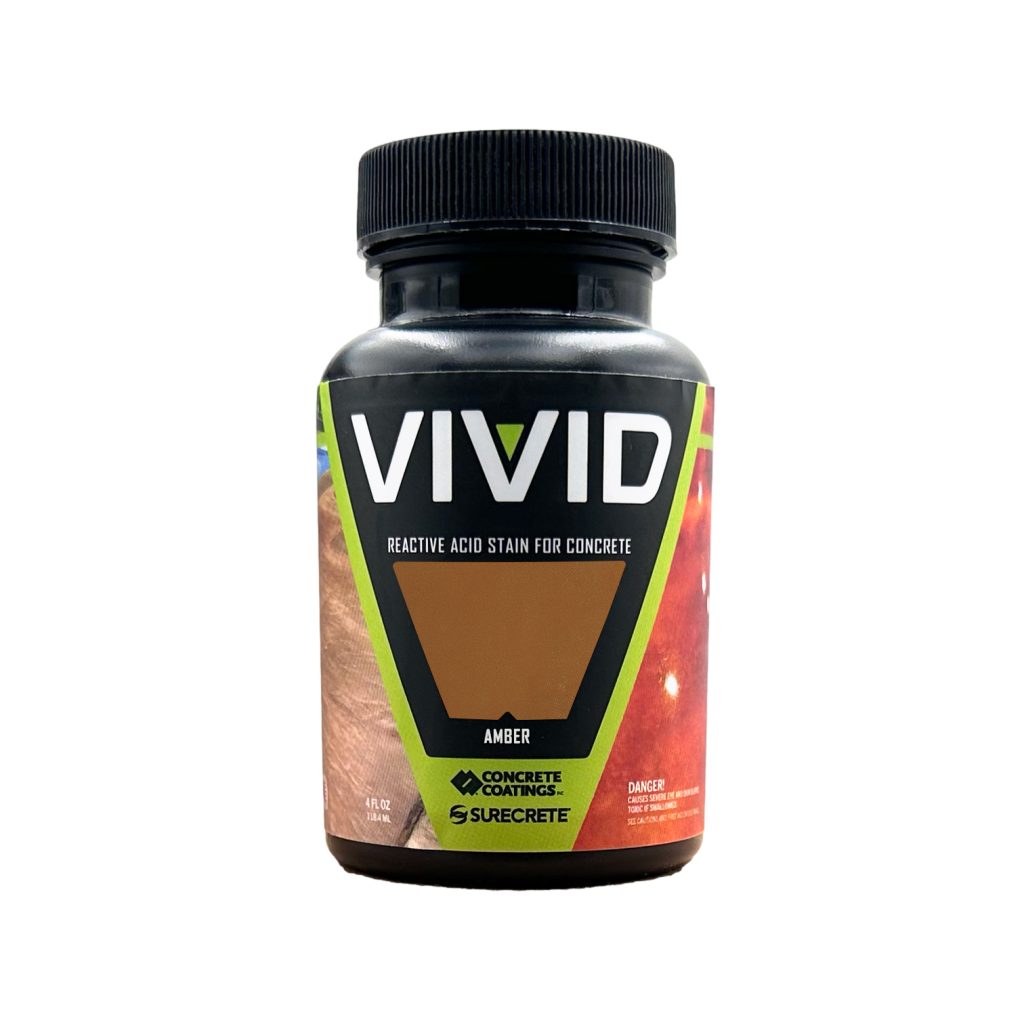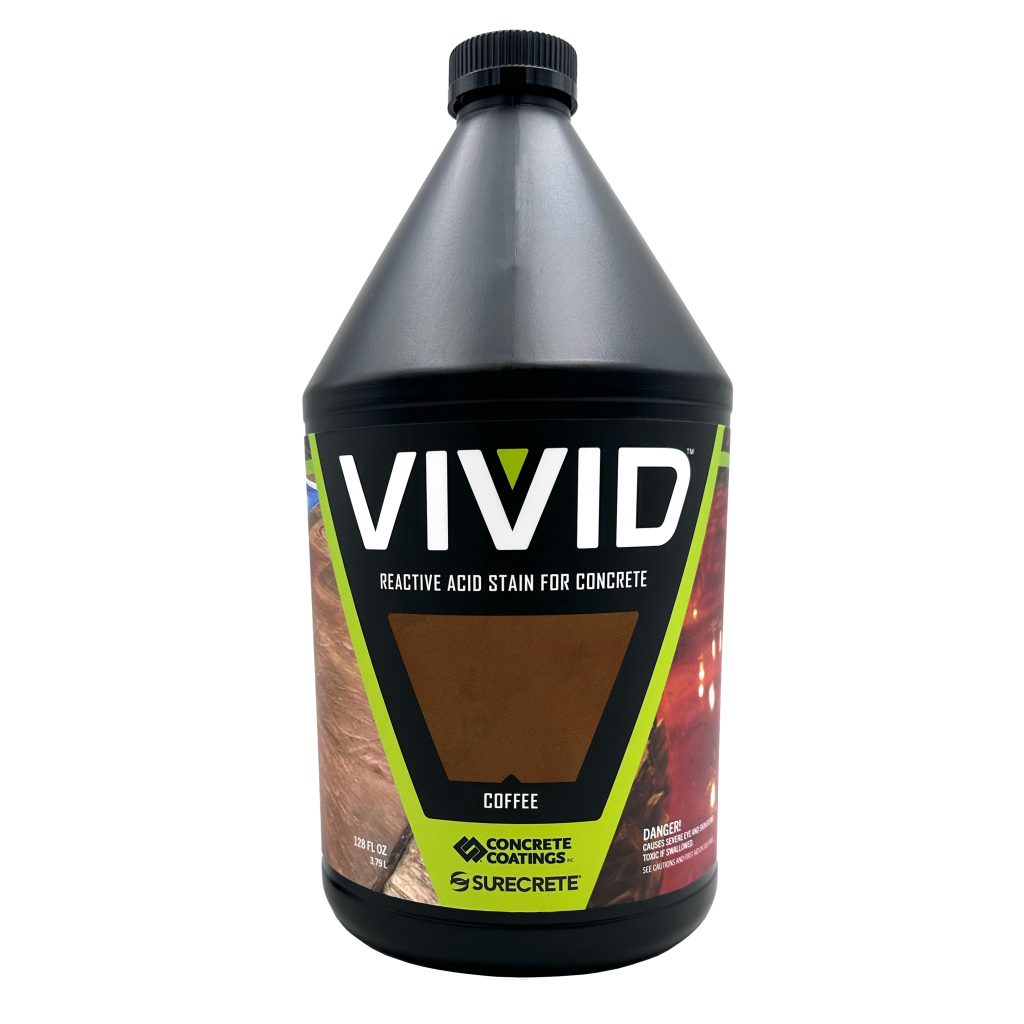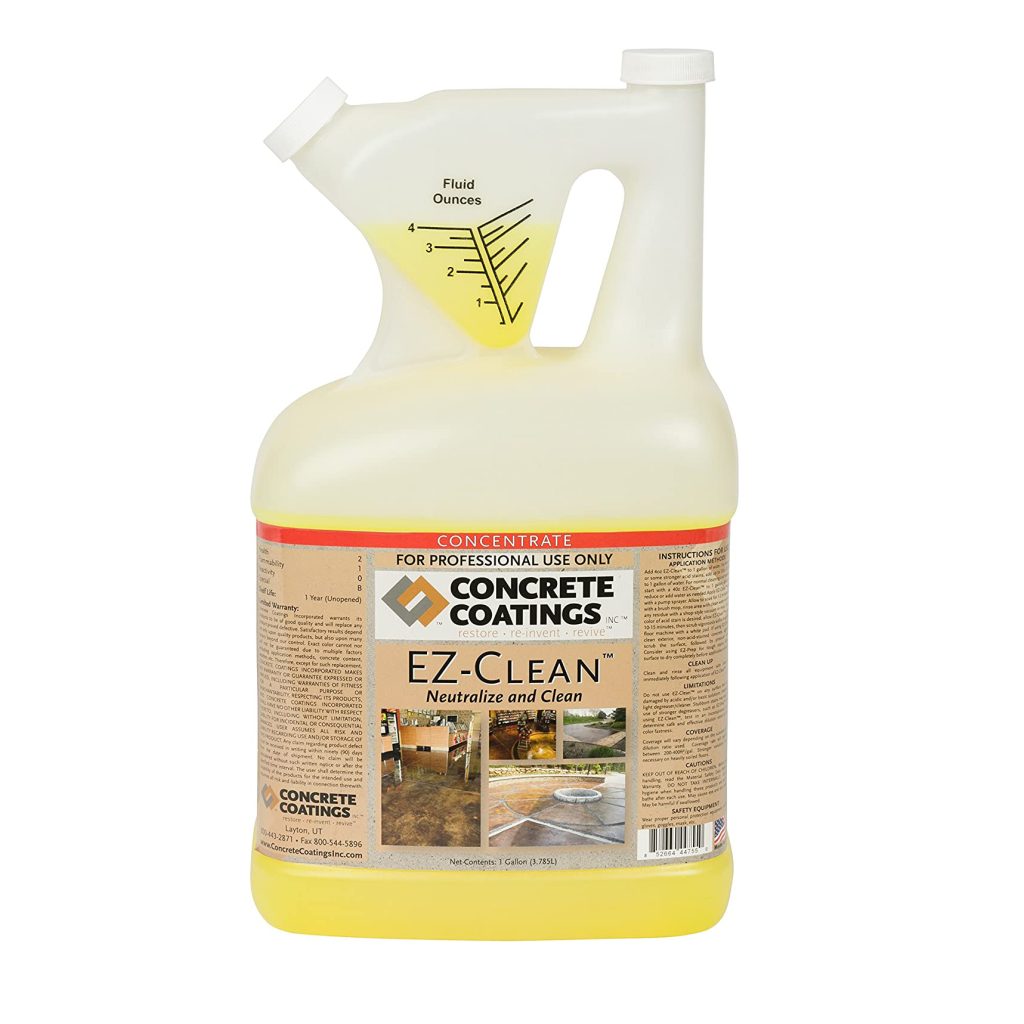Everything You Need to Know Before Acid Staining Your Concrete
If you’re looking to add rich, permanent color and natural variegation to your concrete surfaces, Vivid™ Acid Stain by Concrete Coatings is a powerful solution. Known for producing deep, mottled tones that mimic the look of stone or leather, Vivid Acid Stain reacts chemically with cured concrete to create one-of-a-kind effects that won’t peel or flake. In this guide, we’ll walk you through everything you need to know—from proper surface preparation to staining technique, neutralizing residue, and sealing—so you can get professional-looking results whether you’re working on a patio, garage floor, or decorative interior slab.
Watch the Acid Staining Process Step-by-Step
Watching the acid staining process can make a big difference when planning your project. In the video below, created by Concrete Coatings, you’ll see a detailed, step-by-step walkthrough of how to properly apply acid stain to concrete—from surface preparation to final sealing. It’s a great visual guide to help you feel more confident before getting started.
Prefer a Printable Version?
We’ve put together a full downloadable guide that walks you through every step of the acid staining process—from surface prep to sealing. Click below to download and keep it handy for your project!
Understanding How Acid Stain Reacts to Concrete
- Regardless of the brand of acid stain used, the colors produced will rely heavily on skill, practice, and experimentation.
- Each concrete slab will react differently.
- Application methods, and the age of the concrete will result in different tones or hues, and in the case of very old concrete; the stain may have little or no reaction.
- Acid stains do not have the same effect on all floors. Older and worn concrete or concrete that may receive large amounts of running water may have little or no chemical reaction.
- Even in a controlled environment, cements, aggregates, water content, and concrete curing methods will contribute to different results.
- Use caution when applying a second coat of acid stain—while it can deepen the color, this only works if the concrete surface remains chemically reactive. If the surface can no longer absorb the stain, additional applications may have little effect and could lead to muddy or uneven tones, especially with darker colors.
- Test sections should be done to verify suitability and appearance prior to application. 4 oz Vivid Acid Stain sample bottles are available in our store.
Vivid Acid Stain Coverage
One gallon of Concrete Coatings Vivid Acid Stain will cover approximately 200 to 300 square feet of concrete surface, depending on saturation.
Concrete Preparation and Evaluation for Acid Staining
- All concrete should be fully cured for 28 days.
- Concrete must be free of sealers, paint, oil, mastic, or anything that would interfere with the reaction of the stain.
- Make sure the area under the surface drains well to prevent moisture from building up underneath. It’s also important to check the floor for any signs of excess moisture before starting.
- One of the keys to a successful acid staining application is a very clean surface. For best results, the surface should be scrubbed with a low suds cleaner, like Concrete Coatings EZ-Clean Neutralizer and Cleaner, and water using a scrub brush or powered floor buffing machine.
- Power troweled (burnished) floors may need to be slightly sanded to open up the surface.
- Mop all residue from the floor until rinse water remains clear.
- Do not use muriatic or hydrochloric acid for cleaning the floor prior to an acid stain application. Use of acid or other similar chemicals will reduce the reaction of the stain.
Supplies and Equipment for Acid Staining
- Plastic acid pump sprayer — Do not use metal sprayers for staining application. The acidic chemicals will destroy most metal parts.
- Disposable chip brushes
- Plastic containers; one to two quart
- Medium bristle push broom
- Wet vacuum
- Squeegee
- String mop and mop bucket
Before You Get Started
Remember that chemical acid stains will react differently on all concrete surfaces. Due to the unique nature of acid stains, it is highly recommended that small representative samples be applied in inconspicuous areas to determine how the stain will react with the actual concrete. 4 oz Vivid Acid Stain sample bottles are available in our store.
Colors should only be chosen by test areas on the actual concrete on the surface in which the stain is to be applied. The color in the bottle is not the same as it will look on concrete once the stain has dried and reacted with the concrete.
All stains can be diluted up to 50% with water for lighter color variations.
When using multiple bottles of the same stain color, always mix them together in a larger container before application. This ensures uniform color across the entire surface, as slight variations can occur between batches during manufacturing. Applying separate bottles without mixing may result in visible color shifts from one area to another.
How to Apply Acid Stain
- Protect surrounding areas with plastic or masking before staining application.
- Pre-moisten the concrete with a pump sprayer filled with water prior to application of stain.
- If using multiple colors, start with light colors and work toward dark colors.
- Spray stain in a small circular pattern maintaining an even consistent coverage of the surface. A fizzing will occur as the stain reacts with the concrete; this is normal and is a good sign.
- Continue in the same fashion to complete floor, keeping a wet edge as to reduce application marks
- Scrubbing with a stiff acid brush and respraying may be necessary to help the stain penetrate the floor.
- The stain reaction color usually occurs in two to four hours. Test sections should be performed to verify suitability and appearance prior to application.
Neutralize and Clean Acid Stained Surfaces
- A chalky residue will appear on the concrete surface after it dries, and is normal.
- Spray the entire surface with Concrete Coatings EZ-Clean Neutralizer and Cleaner using a pump sprayer to neutralize any remaining acidic residue.
- Eliminate residue by scrubbing the floor with a stiff broom/brush, then mop, vacuum, or squeegee the floor clean. Rinse water may cause discoloration so be careful to not spill.
- Continue mopping until mop water remains completely clear.
- Eliminate all residue to achieve proper bonding of sealer.
- Avoid spilling on greenery or surrounding areas.
- Dispose of this waste according to local, state and or federal requirements.
Note: Color can be determined at this point. If color is too dark or too light, now is the time to address it. Another coat of stain can be applied to darken the surface, or the surface can be scrubbed aggressively with soft pads to remove some of the concentration.
Use caution when applying a second coat of acid stain—while it can deepen the color, this only works if the concrete surface remains chemically reactive. If the surface can no longer absorb the stain, additional applications may have little effect and could lead to muddy or uneven tones, especially with darker colors.
Seal Your Acid Stained Concrete
- Wait at least 24 hours before sealing
- Pay particular attention to control joints and wall lines as they retain water for very long periods of time. Using warm air will expedite drying.
- Do not apply sealer of any kind until all moisture is removed. Any moisture present can cause whitening of most sealers that can be difficult to remedy.
- Sweep or gently vacuum the surface before applying the sealer to remove any fine debris.
Always refer to the sealer’s Technical Data Sheet (TDS) before applying—following the right steps ensures maximum durability, proper adhesion, and safe use. If you use a solvent-based sealer indoors, please ensure proper ventilation and have extinguished any pilot lights or open flames.
Sealer Options for Acid Stained Concrete Surfaces
After the staining process is complete, applying a sealer is essential to protect the surface and highlight the unique coloration achieved with acid stain. Below, we provide a range of solvent-based and water-based sealers suitable for both interior and exterior concrete. Solvent-based sealers tend to deepen color and create a higher gloss finish, but they typically have stronger odors and longer cure times. Water-based sealers offer easier application, lower odor, and quicker drying, though they may produce a more subtle enhancement of the color. Selecting the right sealer depends on the performance, appearance, and maintenance requirements you envision for your project.
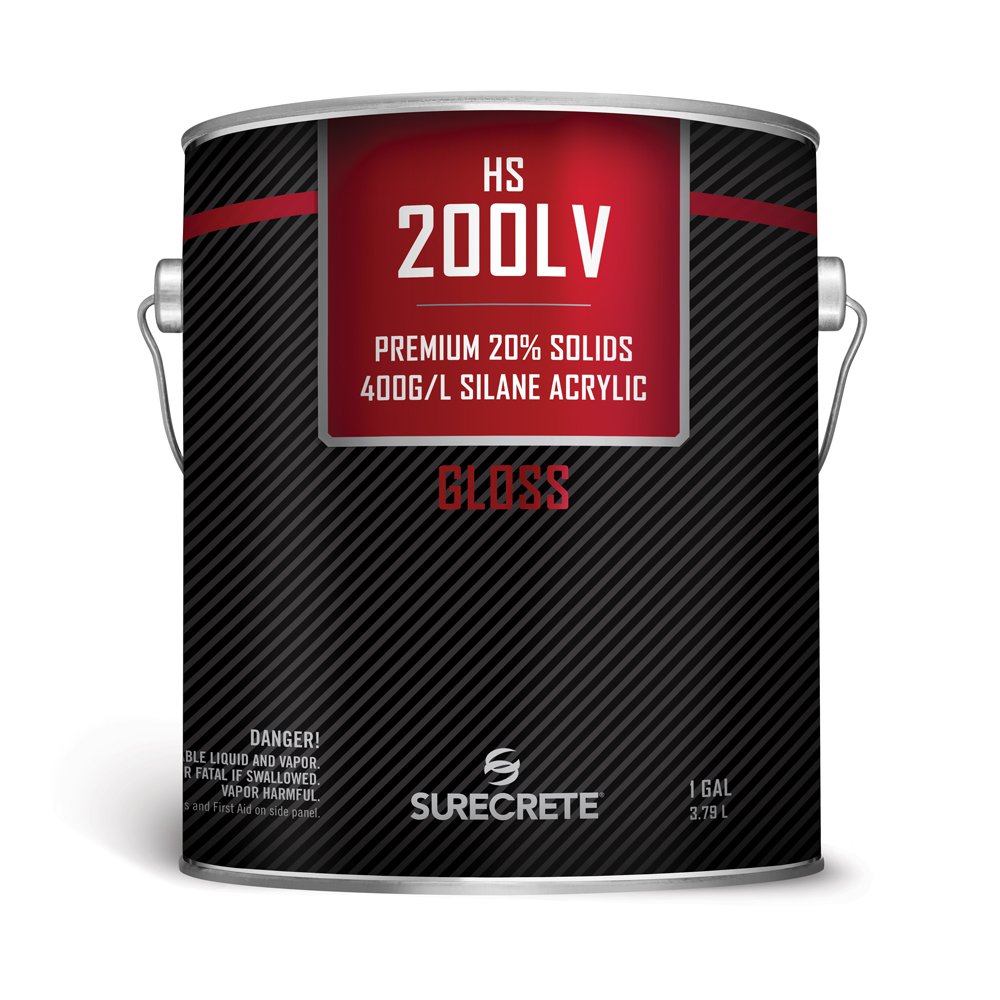
SureCrete HS 200LV
Solvent-Based / Interior / Exterior
HS 200LV combines a solvent-based acrylic formula with silane nano-technology to maximize penetration, surface adhesion, and water resistance. Designed to deliver a consistent, high-gloss finish, it’s ideal for stamped and decorative concrete surfaces needing dependable, long-term protection.
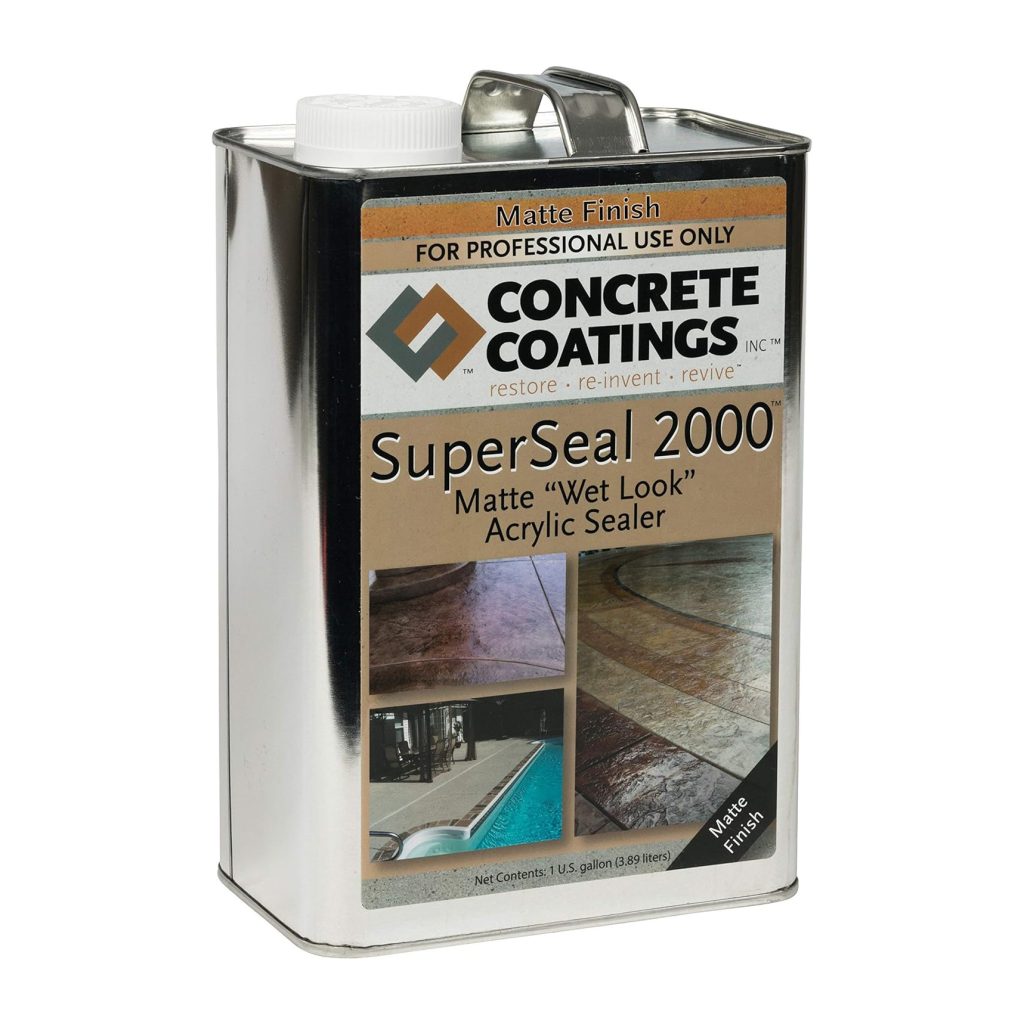
Concrete Coatings SuperSeal 2000
Solvent-Based / Interior / Exterior
SuperSeal 2000 is a quick-drying, solvent-based sealer that brings out the rich color of your concrete and shields it from the elements. It’s a great choice for exposed aggregate and colored surfaces, helping protect against stains, water damage, and harsh weather.
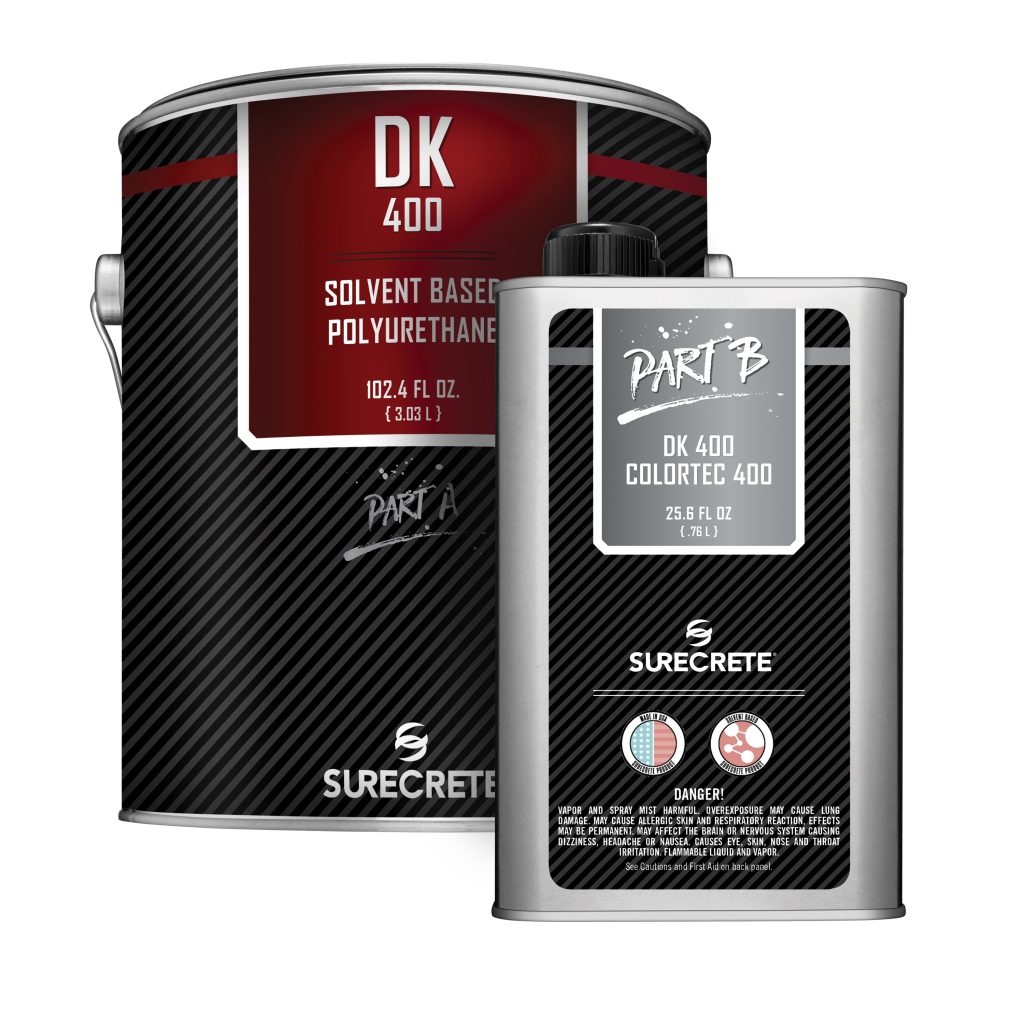
SureCrete DK 400
Solvent-Based / Interior
DK 400 is a high-performance, two-part polyurethane with outstanding chemical resistance, abrasion protection, UV stability, and long-lasting gloss retention. This solvent-based topcoat offers greater durability and strength than acrylic sealers, making it ideal when maximum surface protection and a high-end finish are critical.
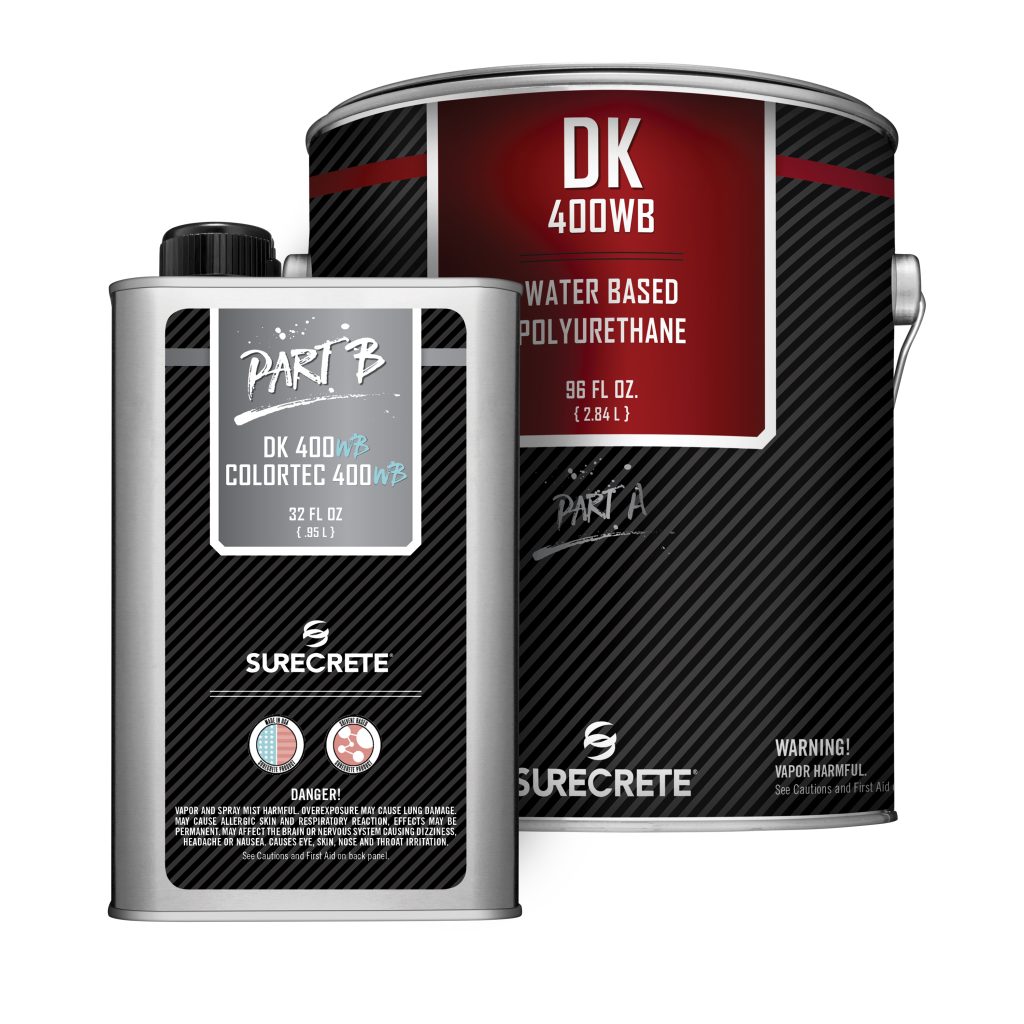
SureCrete DK 400WB
Water-Based / Interior
DK 400WB is a durable, two-part water-based polyurethane engineered to deliver a strong, low-VOC finish without the harshness of traditional solvent systems. Available in gloss or satin, it’s a reliable choice for long-lasting protection on interior floors and coatings.
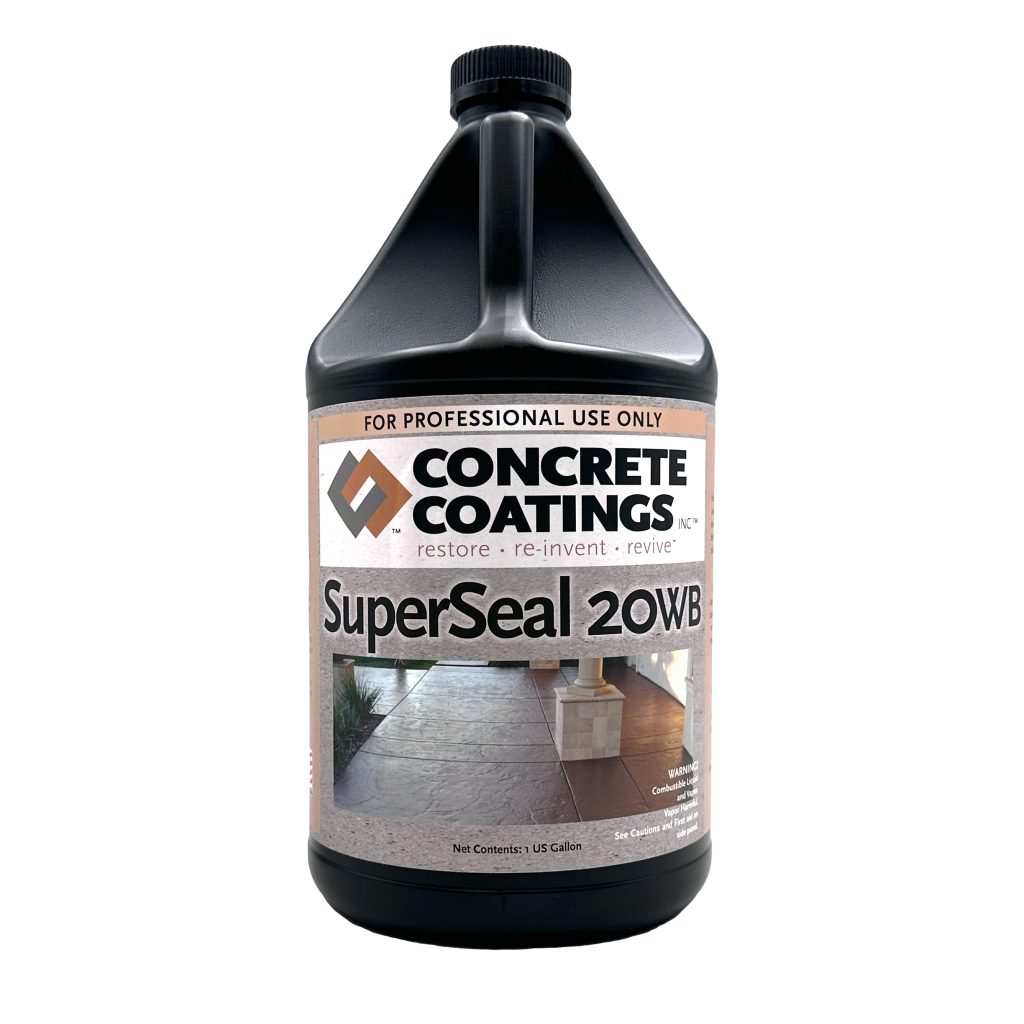
Concrete Coatings SuperSeal 20WB
Water-Based / Interior / Exterior
SuperSeal 20WB is a water-based acrylic sealer that delivers a smooth satin finish with easy, efficient application. Its low odor, breathable formula and simple water cleanup make it an excellent choice for protecting decorative concrete surfaces.
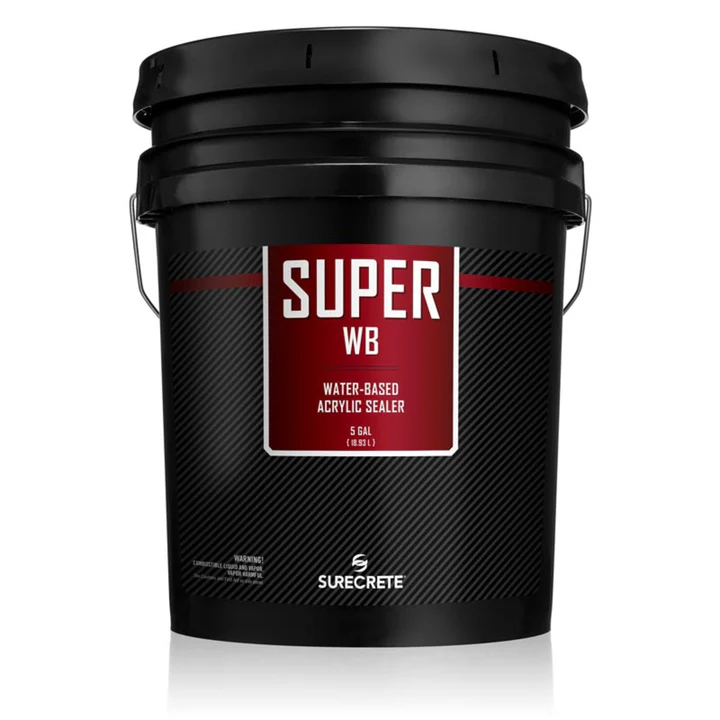
SureCrete Super WB
Water-Based / Interior / Exterior
Super WB is a water-based acrylic sealer that provides a durable, protective coating with the option of a gloss or low-luster finish. Its higher-build formula, easy application, and excellent water repellency make it an ideal choice for overlays and decorative concrete surfaces.

